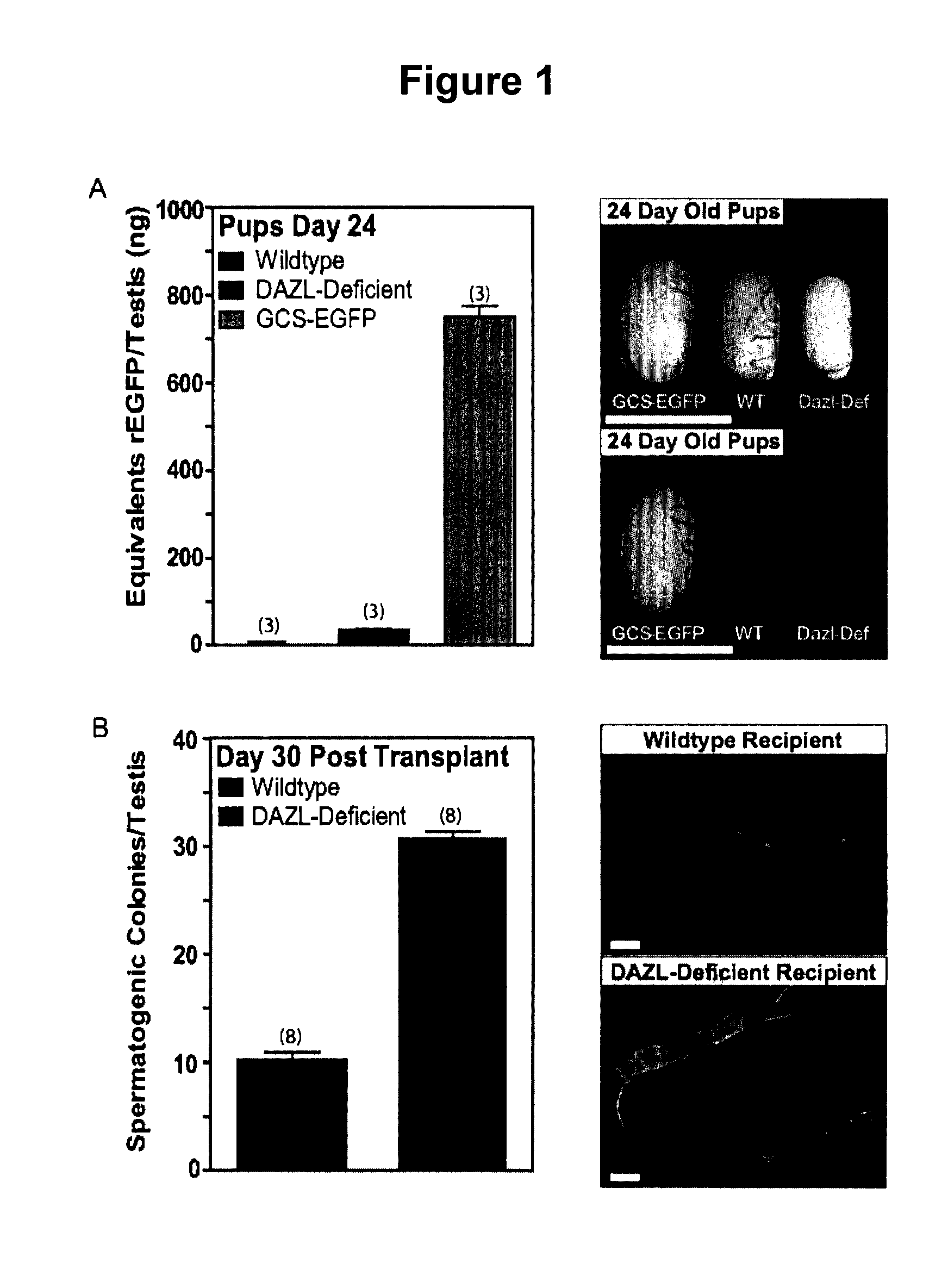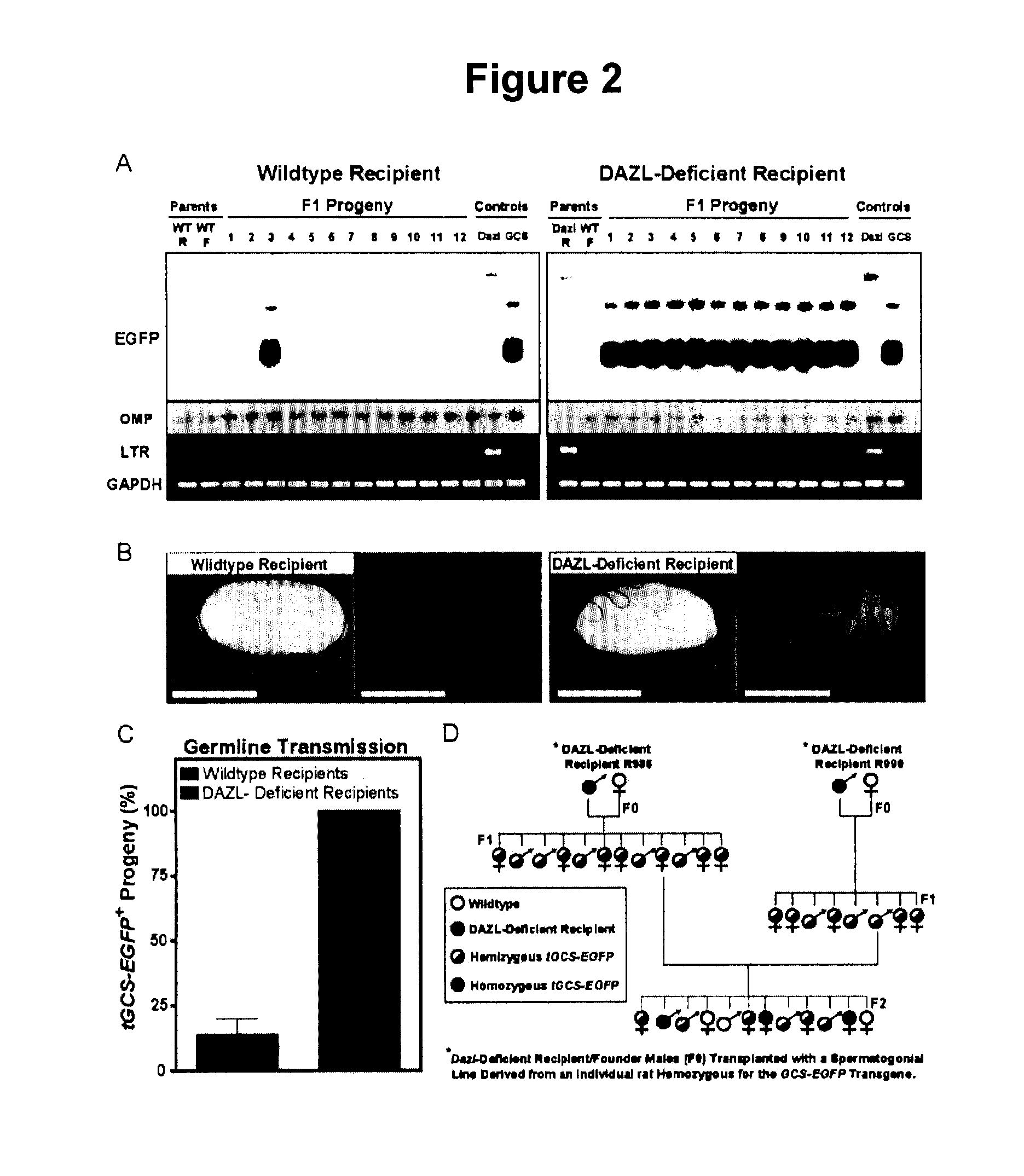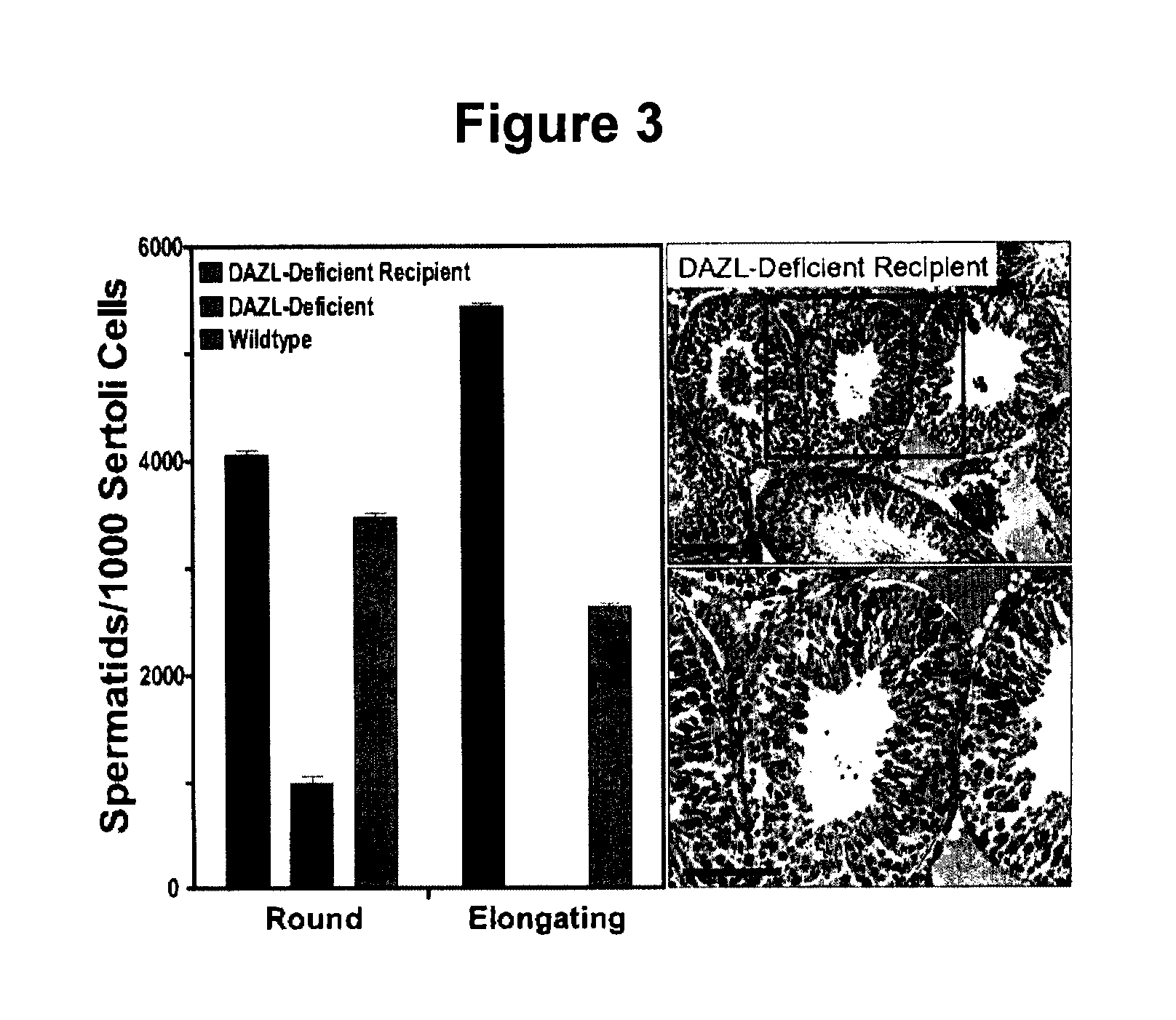Production and use of rat spermatogonial stem cell lines
a technology of stem cells and spermatogenesis, applied in the field of stem cells, can solve the problems of severe disruption of spermatogenesis in these rats, and achieve the effect of 100% germline transmission
- Summary
- Abstract
- Description
- Claims
- Application Information
AI Technical Summary
Benefits of technology
Problems solved by technology
Method used
Image
Examples
example 1
Generation of DAZL-Deficient Rats on a Fischer F344 Genetic Background
[0073]Male DAZL-deficient rats are sterile, whereas female DAZL-deficient rats remain fully fertile. Somatic testis cells in DAZL-deficient rats are able to support full development of spermatozoa from healthy donor spermatogonial stem cell lines derived from normal Sprague Dawley rats, thus the effects of DAZL on disrupting sperm cell development are restricted to the germ-line. Importantly, the absence of endogenous sperm production by DAZL-deficient rats allows the sperm produced from the transplanted, donor spermatogonial stem cell lines to develop and function within an environment devoid of any competition from the hosts germline. The selected, genetically modified haploid gametes can then be used to produce mutant rats through natural mating of recipients, or by assisted reproduction techniques.
[0074]To use the DAZL-deficient recipient rat model as a strategy to enrich for fully functional Fischer F344 Rat ...
example 2
Nutrient Mixture for Culturing Rat Spermatogonial Stem Cells
[0075]SG medium is an effective and efficient nutrient mixture for growing rat spermatogonial stem cells. SG medium is composed of Dulbecco modified Eagle medium:Ham F12 nutrient mixture (1:1), 20 ng / ml GDNF, 25 ng / ml FGF2, 100 μM 2-mercaptoethanol, 6 mM L-glutamine and a 1× concentration of the B27-Minus Vitamin-A Supplement solution. With the use of SG medium, six spermatogonial lines were derived from the testes of six, separate Sprague Dawley rats. After proliferating over a 120 day period in SG medium, stem cells within the spermatogonial cultures effectively regenerated spermatogenesis in testes of busulfan-treated recipient rats, which transmitted the donor cell haplotype to greater than 75% of progeny by natural breeding. Sub-culturing in SG medium did not require protease treatment, and was achieved by passaging the loosely bound spermatogonial cultures at 1:3 dilutions onto fresh mono-layers of irradiated, DR4 mou...
example 3
Deriving Spermatogonial Lines from Inbred Fischer, F344 NHsd Rats
[0087]Total laminin-binding (LB) spermatogonia (2.3×106) were isolated from the seminiferous tubules of 10 inbred Fischer Rats (F344 NHsd Rats, Harlan, Inc) at 22 days of age. The isolated spermatogonia were then used to derive lines of proliferating spermatogonia in Spermatogonial Culture Medium (SG Medium) using established methods. In brief, following isolation, LB spermatogonia were plated equally into 6, gelatin-coated wells (9.6 cm2 wells) of a 6-well culture plate. The cells were harvested by gentle pipetting, pelleted at 200×g for 4 min, suspended in fresh SG Medium and then passed 3 times sequentially at a 1:1 ratio onto fresh gelatin-coated wells for 44-48 hr incubation periods between passages over a total of 6 days. Starting on the 7th day, cells were harvested from all wells as described above, pooled together and plated into 1, 9.6 cm2 well of mouse embryonic fibroblasts (MEFs) and then maintained and pro...
PUM
| Property | Measurement | Unit |
|---|---|---|
| concentration | aaaaa | aaaaa |
| doubling time | aaaaa | aaaaa |
| doubling time | aaaaa | aaaaa |
Abstract
Description
Claims
Application Information
 Login to View More
Login to View More - R&D
- Intellectual Property
- Life Sciences
- Materials
- Tech Scout
- Unparalleled Data Quality
- Higher Quality Content
- 60% Fewer Hallucinations
Browse by: Latest US Patents, China's latest patents, Technical Efficacy Thesaurus, Application Domain, Technology Topic, Popular Technical Reports.
© 2025 PatSnap. All rights reserved.Legal|Privacy policy|Modern Slavery Act Transparency Statement|Sitemap|About US| Contact US: help@patsnap.com



